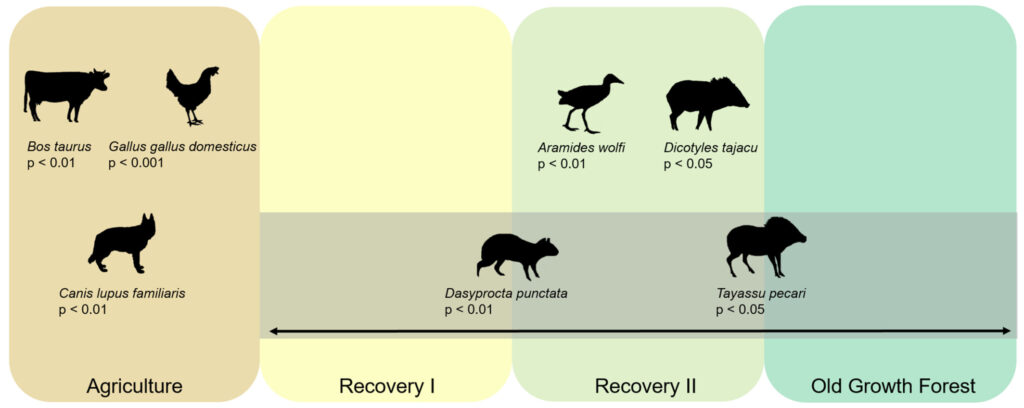Ocelots, jaguars, tayras, peccaries or armadillos may be surprisingly common in a tropical forest, but are very shy and hard to observe systematically. Only wildlife cameras reveal their often nocturnal activities and distribution. A team of researchers implemented such cameras across all sites and analysed the community composition and abundance. Results of this campaign were now published by Nina Grella and coauthors in Biotropica. Pictures taken by the cameras covered a total of 19 wild mammal species and 15 species of birds in the understory, plus 6 domestic species. The conclusions were very clear: With a recovering forest, the activity, biomass and diversity of wild mammals and large bird species returned. Late stages of forest recovery (20 years or older) had a similar or even higher activity and diversity than undisturbed old-growth forests. As expected, wild animals were largely replaced by domestic animals and humans in the agricultural areas. The successful recovery of wildlife is another positive sign and confirms the enormous value of naturally regenerating secondary forests alongside undisturbed forest areas for biodiversity conservation.






